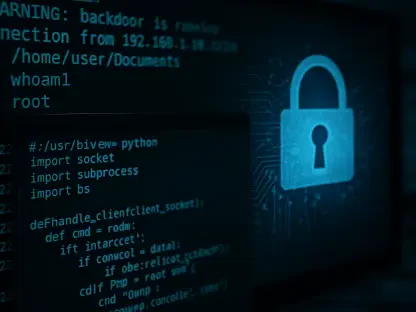The manufacturing sector has increasingly embraced the integration of Information Technology (IT) with Operational Technology (OT) to drive efficiencies and streamline operations. However, this convergence comes with its own set of cybersecurity challenges, exposing manufacturers to heightened risks from cyber threats. Chief Information Security Officers (CISOs) are tasked with the dual responsibility of safeguarding critical systems from these threats while ensuring the seamless continuity of production processes. This article delves into the multifaceted strategies that CISOs can employ to protect their organizations in this evolving landscape.
The Complexities of IT and OT Integration
Modern manufacturing operations heavily depend on the seamless integration of IT and OT systems, creating a vast and interconnected network that is pivotal to maintaining operational efficiency. However, this integration significantly expands the attack surface, making it imperative for CISOs to craft robust and adaptive cybersecurity strategies. Legacy OT systems, many of which are decades old, present a considerable vulnerability. These systems often lack contemporary security features, and patching them can be both costly and complicated, further exacerbating the cybersecurity challenges.
Cybersecurity strategies must address the unique characteristics of these legacy systems, which typically use proprietary protocols that traditional IT security tools struggle to monitor effectively. The increased connectivity brought about by integrating IT and OT systems means that a breach in one part of the network can have cascading effects, potentially crippling entire production lines. Therefore, gaining comprehensive visibility into all assets within the OT environment and understanding their interactions is vital for developing effective security measures.
Addressing Remote Access and Ransomware Threats
In today’s manufacturing landscape, remote access is essential for uninterrupted operations. However, the methods commonly used to facilitate remote connectivity, such as Virtual Private Networks (VPNs) and jump servers, introduce their own set of risks. These methods often involve shared credentials and broad access privileges, creating vulnerabilities that can be exploited by cyber attackers. To mitigate these risks, CISOs must implement stringent access control measures and continuously monitor for any unusual activity within the network.
Ransomware has emerged as a formidable threat to the manufacturing sector, with the potential to bring production to a grinding halt and disrupt entire supply chains. Experts agree that a more pragmatic approach is to focus on mitigating the impact of such attacks rather than attempting to prevent every potential breach. This involves implementing robust backup and recovery strategies, segmenting networks to contain the spread of ransomware, and ensuring that critical systems can be quickly restored to minimize downtime and operational disruption.
Securing the Supply Chain
The interconnected nature of the manufacturing ecosystem means that a cyber attack on a single manufacturer can have widespread repercussions across a vast network of suppliers, partners, and customers. Therefore, strengthening cybersecurity within the supply chain is paramount to preventing business disruptions and revenue loss. CISOs need to enforce strict security controls and policies to manage supply chain dependencies effectively. This includes conducting thorough security assessments of suppliers and ensuring they adhere to robust cybersecurity practices.
Proactive measures, such as implementing secure communication channels and requiring suppliers to follow standardized security protocols, can help safeguard against the cascading effects of a cyber attack. Additionally, establishing incident response plans that encompass supply chain partners ensures a coordinated and swift response to any security incidents, thereby minimizing the impact on the broader manufacturing network.
Enhancing Employee Training and Awareness
Employees play a critical role in defending against cyber threats, particularly those stemming from phishing and email compromises. Regular cybersecurity training and awareness programs are essential to ensure that employees can recognize and respond to potential threats effectively. These programs should be ongoing and adaptive, addressing emerging threats and incorporating real-world examples to reinforce learning and vigilance.
The increasing sophistication of social engineering attacks, particularly those leveraging Generative-AI, makes it challenging to rely solely on human vigilance. Therefore, combining employee awareness with cutting-edge technology is crucial. This includes using advanced email filtering and anomaly detection tools, which can identify and block suspicious activity before it reaches employees, thus providing an additional layer of defense against cyber threats.
Leveraging AI and Automated Security Tools
Employing AI-driven security platforms offers a significant advantage in identifying and mitigating cyber threats compared to traditional methods. These advanced tools can analyze vast amounts of data, identify anomalies, and automate threat responses, thereby significantly enhancing cybersecurity defenses. The integration of human awareness with AI technology provides a robust, multi-layered security strategy that ensures comprehensive protection against sophisticated cyber attacks.
AI-driven security platforms can continuously learn and adapt to evolving threats, providing real-time insights and enabling proactive measures to be taken. This dynamic approach allows for faster detection and response times, reducing the window of opportunity for attackers and minimizing the potential impact of security incidents. Additionally, these platforms can help prioritize security alerts, allowing security teams to focus on the most critical threats and improve overall incident response efficiency.
Managing Third-party Devices and External Risks
The use of external devices and removable media in manufacturing facilities by third-party vendors introduces significant cybersecurity risks, as these can be potential vectors for malware and other malicious software. Implementing stringent scanning policies for all incoming data and devices is vital to mitigate these risks. This ensures that any potentially harmful data is detected and quarantined before it can infiltrate the critical network infrastructure.
To further enhance security, dedicated scanning kiosks and secure file storage solutions should be employed. These systems can provide a secure environment for scanning and sanitizing data from external devices, ensuring that only clean and verified data is allowed to interact with the manufacturing network. By taking these proactive measures, CISOs can safeguard manufacturing operations from external threats and minimize the risk of malware introduction.
Proactive Breach Containment Strategies
The manufacturing sector is increasingly integrating Information Technology (IT) with Operational Technology (OT) to enhance efficiency and streamline operations. This convergence provides notable benefits, but it also introduces significant cybersecurity challenges. Manufacturers now face heightened risks from cyber threats, making it crucial to protect their critical systems. Chief Information Security Officers (CISOs) must balance dual responsibilities: shielding these essential systems from cyber attacks while maintaining the seamless flow of production. This article explores the comprehensive strategies that CISOs can use to navigate and protect their organizations in this shifting landscape. These strategies may include implementing advanced security protocols, regular system audits, employee training programs, and investing in the latest cybersecurity technologies. Additionally, fostering a collaborative culture where IT and OT teams work hand-in-hand can pave the way for better defense mechanisms. Understanding the unique vulnerabilities of both IT and OT environments allows for targeted and effective security measures. As the manufacturing sector continues to embrace digital transformation, the role of CISOs becomes increasingly pivotal in safeguarding against potential cyber attacks and ensuring the continuous and secure operation of manufacturing processes.









